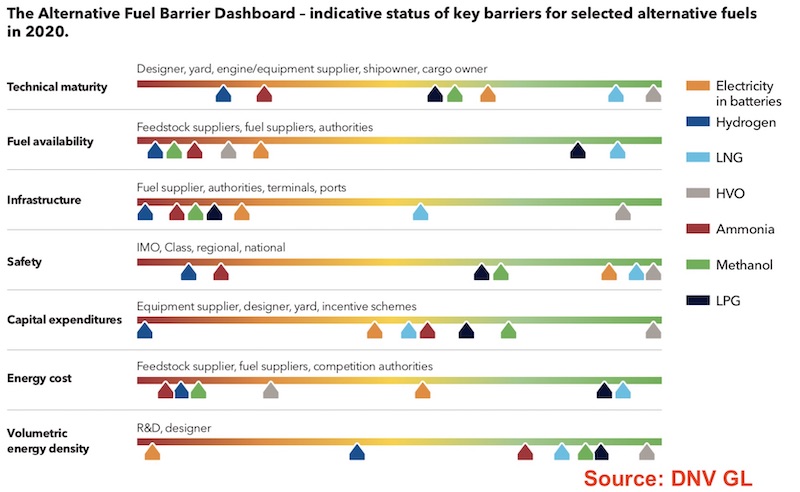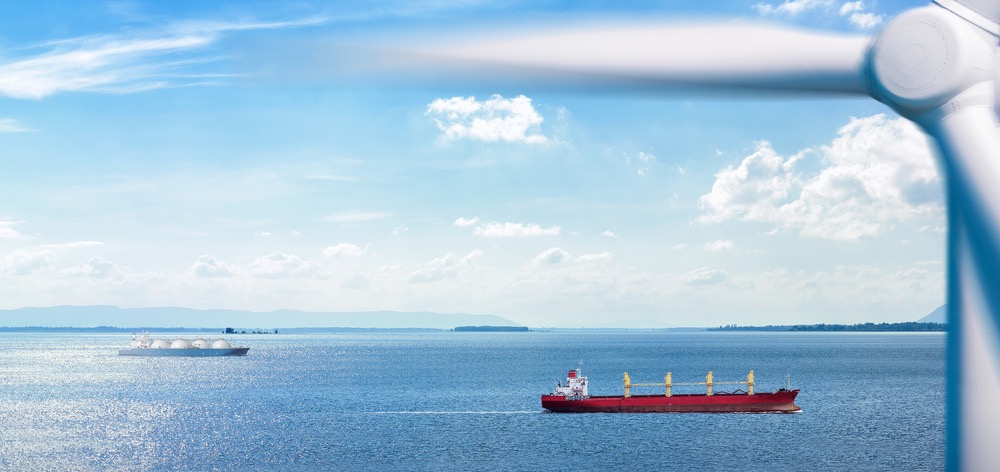DNV GL – Maritime has released the fourth edition of its Maritime Forecast to 2050. Its purpose is to enhance the ability of shipping stakeholders, especially shipowners, to navigate the technological, regulatory and market uncertainties in the industry, and set shipping on a pathway to decarbonization. It is based on a library of 30 scenarios which project future fleet composition, energy use, fuel mix, and CO2 emissions to 2050. Sixteen different fuel types and 10 fuel technology systems are modelled in the report.
“The grand challenge of our time is finding a pathway towards decarbonization,” said Knut Ørbeck-Nilssen, CEO of DNV GL – Maritime. “Reducing GHG emissions is rapidly becoming the defining decision-making factor for the future of the shipping industry. The pressure to act decisively is mounting. Perfect is the enemy of good, and so we mustn’t wait for an ideal solution to arrive and risk making no progress at all. Using a wide range of scenarios involving different fuel types and technologies, and varying degrees of regulatory pressure, our new report helps to map a way forward, offering shipowners clear insights on how to meet the challenges and opportunities ahead.”
The Maritime Forecast identifies the choice of fuel as the essential factor in decarbonizing shipping. The industry is at the beginning of a transition phase, with many potential options emerging alongside conventional fuels. This increasingly diverse fuel environment means that engine and fuel choice now represent potential risks that could lead to a stranded asset. Factoring in the impacts of availability, prices and policy, on different fuels, makes the choice even more complex.
To capture this complexity and help make this picture clearer the Maritime Forecast offers a wide range of scenarios, outlining the potential risks of a particular fuel choice. To make the ramifications concrete, alongside the pathways, the Maritime Forecast includes detailed analysis of a Panamax bulk carrier newbuilding. By stress testing technology decisions under the various pathways and scenarios, the Forecast presents potential performance and the carbon robustness of the various design choices.
The 30 scenarios result in widely different outcomes for the fuel mix in the fleet. In the scenarios with no decarbonization ambitions, very low sulphur fuel oil, marine gas oil and LNG dominate. While under the decarbonization pathways, in 2050 a variety of carbon-neutral fuels holds between 60% and 100% market share.
The key finding of this modelling study: ammonia and methanol appear to be the two dominant future fuels for deep-sea shipping, and the choice between them depends upon input price. If sustainable electricity is less expensive, then e-ammonia (ammonia synthesized from nitrogen and hydrogen in an electrochemical process) makes the most sense; if biomass is less expensive, then bio-methanol comes out ahead. Both products are liquid fuels and are already widely carried as cargoes, making them relatively suitable for retrofit (though ammonia has its own special handling considerations). Methanol can be burned in a suitably adapted marine diesel engine, and research on ammonia as a diesel-cycle fuel is under way.
For shipowners making investment plans today, DNV GL argues that dual-fuel LNG makes the most sense, as it reduces emissions and fuel cost in the near-term while maintaining some flexibility for the future. The study suggests that beyond conventional LNG sources, bio-LNG ande-LNG are among the most promising transition fuels while the market is shifting to liquid low/no-carbon options.
A surprising result from the model is the relative limited uptake of hydrogen as a ship’s fuel, as a result of both the estimated price of the fuel and the investment costs for the engine and fuel systems. Hydrogen, however, plays an integral role as a building block in the production of several carbon-neutral fuels such as e-ammonia, blue ammonia and e-methanol, all of which gain significant uptake under the decarbonization pathways. It may also find niche applications in some vessel types, such as ferries and cruise vessels, as well as in specific regions where investments have been made into local production and distribution.
The Maritime Forecast to 2050 is part of a suite of Energy Transition Outlook (ETO) reports produced by DNV GL. The ETO has designed, expanded and refined a model of the world’s energy system encompassing demand and supply of energy globally, and the use and exchange of energy between and within ten world regions. With files from The Maritime Executive






